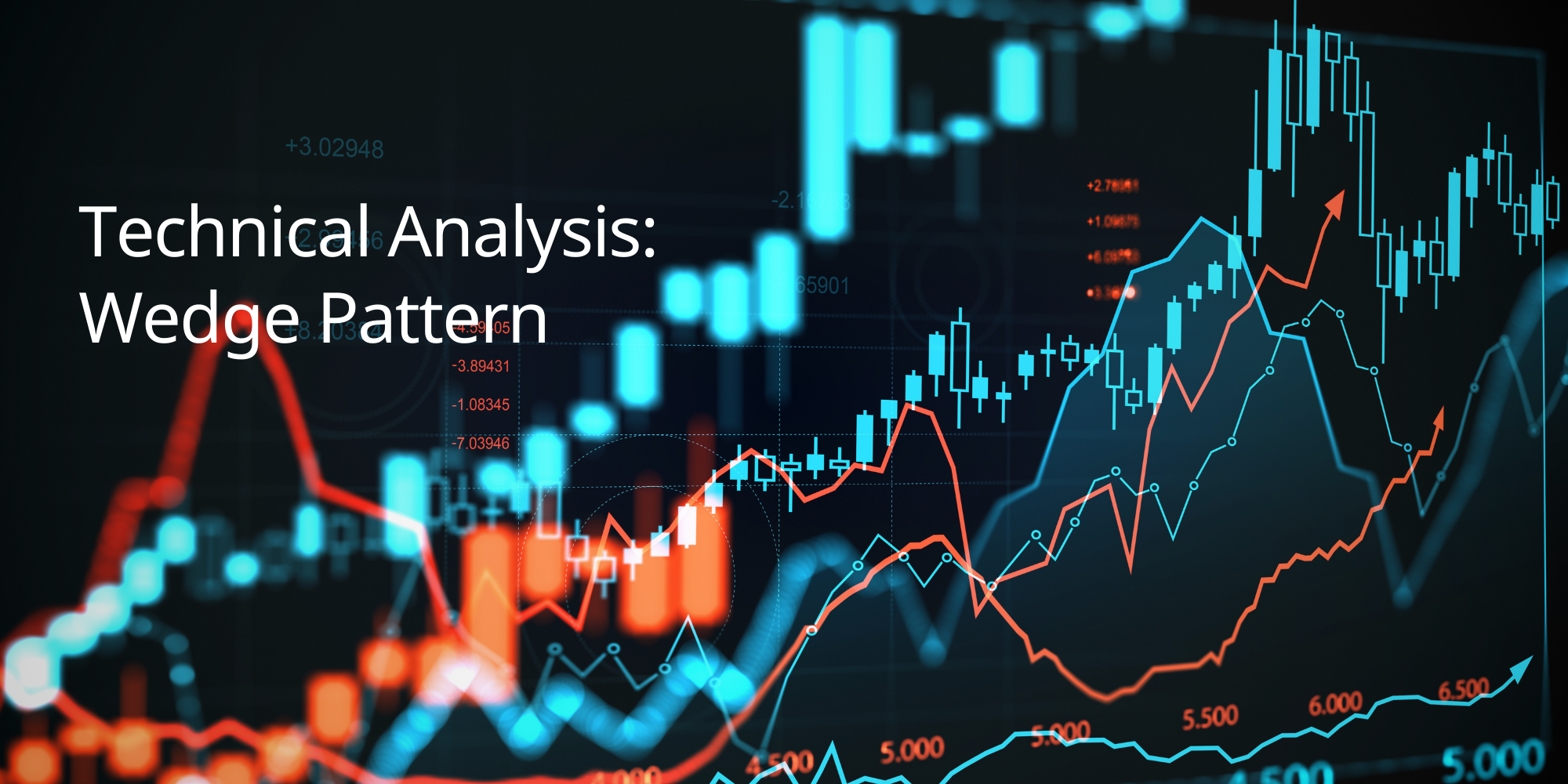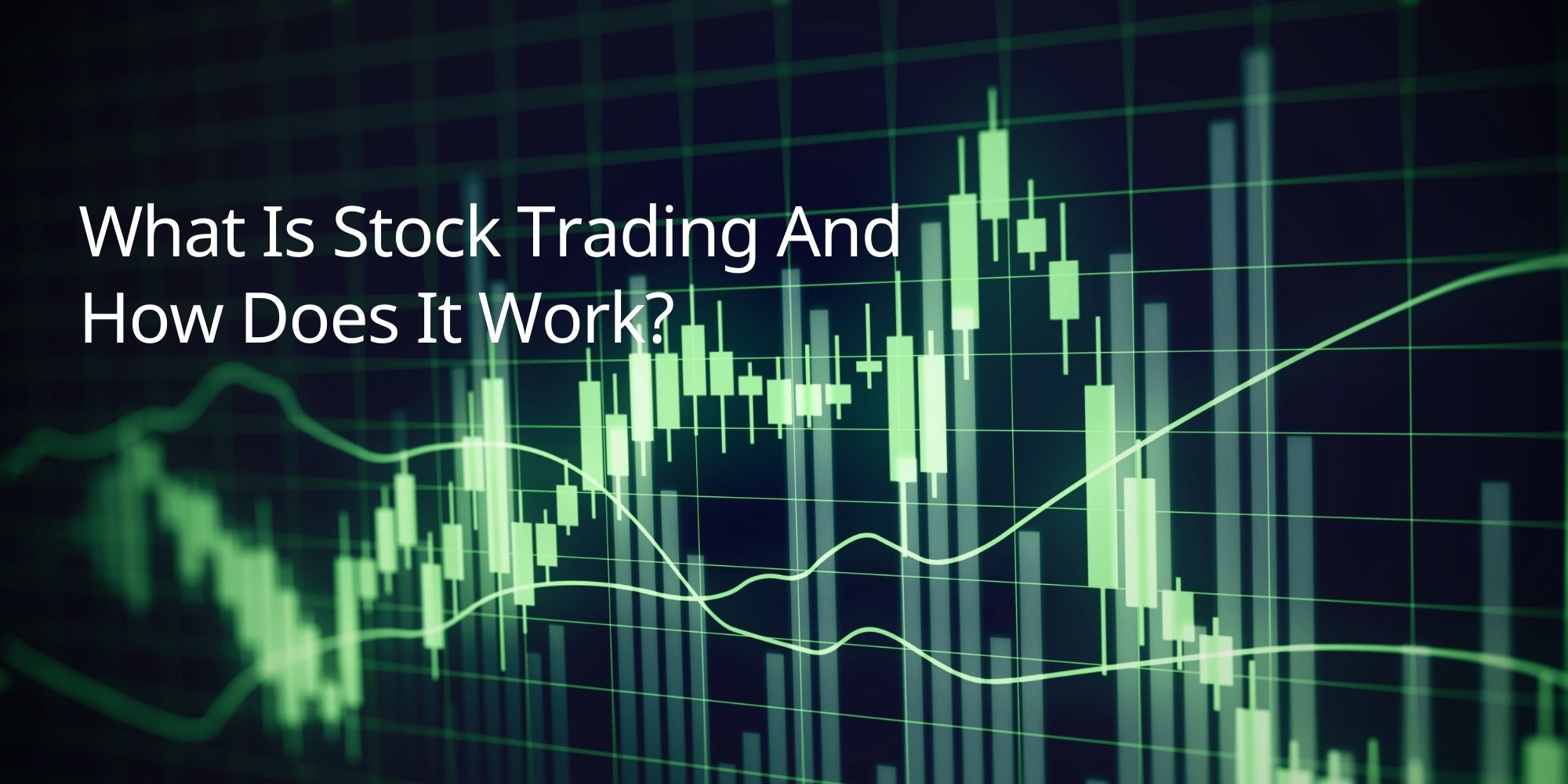Wedge Patterns: Identifying Trend Reversals and Continuations
Wedge patterns are reliable chart formations that often indicate either a trend reversal or continuation, depending on their structure and context. Formed by converging trendlines, wedges can offer early clues about shifts in momentum and help traders plan entries and exits with greater precision.
In this complete guide from TradeSmart, we’ll cover:
- What wedge patterns are and how they form
- The difference between rising wedges (typically bearish) and falling wedges (typically bullish)
- How to confirm wedge breakouts with volume and other indicators
- Practical strategies to trade wedge setups effectively
Whether you’re looking to catch a reversal or follow a strong trend, wedge patterns are powerful tools in any trader’s technical analysis toolkit.
What is a Wedge Pattern?
A wedge pattern is a chart formation that is characterized by two converging trendlines. These trendlines can slope either upwards or downwards, forming a wedge-like shape. The converging trendlines indicate that the price action is becoming tighter and that a breakout in either direction is likely.
How Wedge Patterns Work
Wedge patterns work by identifying a period of consolidation where the price is making higher highs and higher lows (in a rising wedge) or lower highs and lower lows (in a falling wedge), but the overall price range is narrowing. This suggests that the current trend is losing momentum and a reversal is possible.
Trading with Wedge Patterns
Traders often use wedge patterns to identify potential entry and exit points for their trades. A breakout from the wedge in the direction of the prevailing trend can signal a continuation, while a breakout against the trend can signal a reversal.
Key Characteristics of a Wedge Pattern
Here are the key characteristics to look for:
- Converging Trendlines: The pattern is formed by two trendlines that are either both sloping upwards (rising wedge) or both sloping downwards (falling wedge). These trendlines converge as the price action narrows.
- Higher Highs and Higher Lows (Rising Wedge) or Lower Highs and Lower Lows (Falling Wedge): The price makes a series of higher highs and higher lows within a rising wedge, or lower highs and lower lows within a falling wedge. However, the distance between these highs and lows decreases as the pattern matures.
- Decreasing Volume: Volume typically decreases as the wedge pattern forms, indicating that momentum is waning and a breakout is likely.
- Breakout: A breakout from the wedge pattern signals the end of the consolidation period and the potential start of a new trend or a continuation of the existing trend.
Types of Wedge Patterns
Wedge patterns are chart formations that can signal either a reversal or a continuation of a trend. There are two main types of wedge patterns:
- Rising Wedge: This pattern is typically considered a bearish reversal pattern. It forms during an uptrend and signals a potential reversal to the downside.
- Characteristics:
- Two upward-sloping trendlines that converge as the price action narrows.
- The price makes higher highs and higher lows, but the distance between them decreases.
- Volume typically decreases as the pattern matures.
- A breakdown below the lower trendline confirms the pattern and signals a potential reversal to a downtrend.
- Characteristics:
- Falling Wedge: This pattern is typically considered a bullish reversal pattern. It forms during a downtrend and signals a potential reversal to the upside.
- Characteristics:
- Two downward-sloping trendlines that converge as the price action narrows.
- The price makes lower highs and lower lows, but the distance between them decreases.
- Volume typically increases as the pattern matures.
- A breakout above the upper trendline confirms the pattern and signals a potential reversal to an uptrend.
- Characteristics:
Advantages and Limitations of Wedge Patterns
Wedge patterns can be valuable tools for traders, but it’s important to understand both their strengths and weaknesses.
Advantages:
- Identify Potential Trend Reversals or Continuations: Wedge patterns can signal either a reversal or a continuation of a trend, depending on the direction of the breakout. This can help traders anticipate potential market moves and make informed trading decisions.
- Clear Entry and Exit Points: Wedge patterns provide clear entry and exit points for trades. Traders can enter a trade when the price breaks out of the wedge and set stop-loss orders outside the trendlines of the pattern.
- Versatile Applications: Wedge patterns can be applied to various financial instruments, including stocks, indices, commodities, and currencies. This makes them a versatile tool for traders across different markets.
Limitations:
- False Breakouts: The price might break out of a wedge pattern and then quickly reverse back into the pattern, leading to a false breakout and potential losses for traders.
- Ambiguous Signals: Wedge patterns can signal both reversals and continuations, which can make them challenging to interpret. It’s important to consider the broader market context and other indicators to confirm the signal.
- Short-Term Focus: Wedge patterns typically identify short- to medium-term trading opportunities. They might not be as effective for identifying long-term trends.
Mitigating the Limitations
To overcome these limitations, traders can:
- Combine with Other Indicators: Use wedge patterns in conjunction with other technical indicators, such as moving averages, trend lines, or momentum oscillators, to confirm signals and filter out false signals.
- Consider Market Context: Always interpret wedge pattern signals in the context of the overall market environment. Consider factors such as news events, economic data releases, and the broader market trend when making trading decisions.
- Practice Risk Management: Use appropriate risk management techniques, such as stop-loss orders and position sizing, to limit potential losses.
TradeSmart encourages traders to use wedge patterns as part of a comprehensive trading strategy. By understanding its limitations and combining it with other analytical tools, traders can make more informed decisions and improve their trading outcomes.
Wedge Patterns vs. Triangle Patterns
Wedge patterns and triangle patterns are both common chart formations in technical analysis, but they have distinct characteristics and implications for traders.
Key Differences
- Shape:
- Wedge: Two converging trendlines that slope either upwards (rising wedge) or downwards (falling wedge).
- Triangle: Two converging trendlines that typically form a horizontal or symmetrical triangle.
- Trend Implication:
- Wedge: Usually signals a trend reversal, with rising wedges being bearish and falling wedges being bullish.
- Triangle: Can signal either a trend continuation or a reversal, depending on the direction of the breakout.
- Timeframe:
- Wedge: Often forms over a shorter period, from a few weeks to a few months.
- Triangle: Typically forms over a longer period, often seen on weekly or monthly charts.
- Price Action:
- Wedge: The price range narrows as the pattern matures, indicating decreasing momentum.
- Triangle: The price consolidates within the converging trendlines before a breakout.
Why the Distinction Matters
Understanding the differences between wedge patterns and triangle patterns can help traders:
- Interpret market signals correctly: A rising wedge suggests a potential bearish reversal, while a symmetrical triangle might signal either a continuation or a reversal.
- Develop appropriate trading strategies: Wedge patterns might be more suitable for short-term trades, while triangle patterns might be better for longer-term trades.
- Manage risk effectively: The different implications of these patterns can influence stop-loss placement and other risk management decisions.
Conclusion
Wedge patterns can be strong indicators of trend continuation or reversal, depending on whether they’re rising or falling and where they appear in the trend. Understanding these formations and validating them with supporting indicators can significantly improve your trade accuracy and timing.
At TradeSmart, we help you make the most of wedge pattern analysis with:
- Charting tools to spot and draw rising and falling wedges
- Access to MT4 and MT5 platforms for advanced pattern recognition
- Educational materials to deepen your technical skills
- Real-time market insights to support strategic decision-making
Ready to add wedge pattern analysis to your trading strategy?
- Open a TradeSmart account and access professional trading tools
- Practice with a risk-free demo account
- Start live trading with just a $50 minimum deposit
Visit TradeSmart.com now and master the art of trading with wedge patterns.





